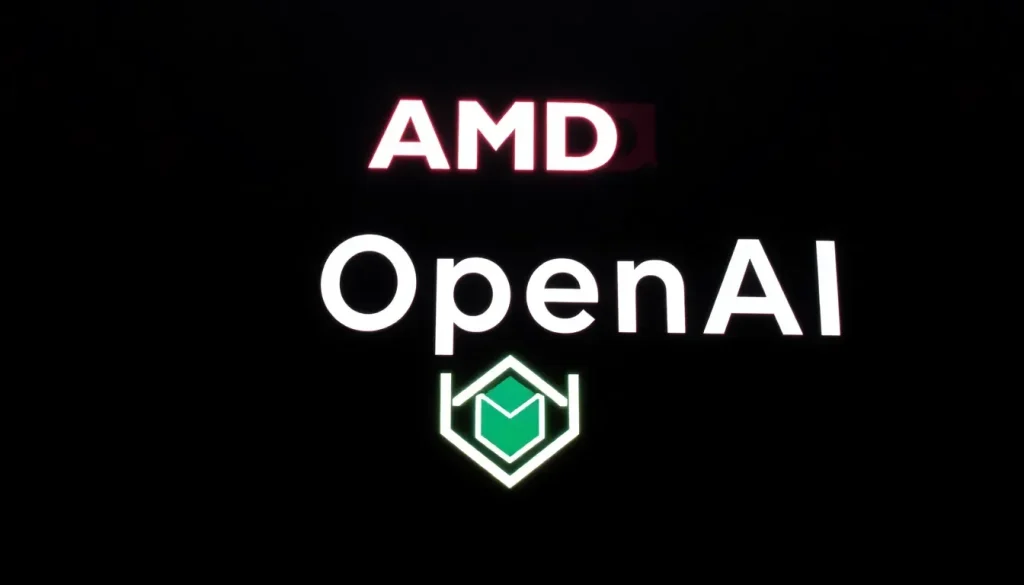AMD's OpenAI Deal and Its Impact on the AI Wars

In the rapidly evolving landscape of artificial intelligence (AI), competition among tech giants is more intense than ever. As companies race to develop the most advanced AI systems, the hardware that supports these technologies has become a focal point of innovation and strategy. In this context, a recent partnership between AMD and OpenAI has the potential to shift the balance of power in the AI market significantly. This collaboration not only challenges the long-standing dominance of Nvidia but also heralds a new era of open-source solutions in AI development.
Understanding the AMD and OpenAI Collaboration
AMD's recent announcement about its substantial agreement with OpenAI is a strategic move that goes beyond a mere hardware transaction. This partnership signifies a deeper alignment in which AMD will supply its high-performance Instinct MI-series GPUs for OpenAI’s foundational model training. More crucially, this deal allows OpenAI to leverage AMD's open-source software stack, potentially redefining how AI models are built and optimized.
This collaboration is a direct challenge to Nvidia's long-held supremacy in the AI hardware sector. Nvidia has cultivated a robust ecosystem around its proprietary CUDA software, which has become the industry standard for GPU computing. However, AMD's partnership with OpenAI indicates a strategic shift towards more flexible and open platforms in AI infrastructure.
The Impact of Open-Source Software in AI
Open-source software is increasingly recognized as a powerful tool for innovation in technology. In the case of AMD, its ROCm (Radeon Open Compute) platform stands out as a compelling alternative to Nvidia's CUDA. Here are some key advantages of AMD's open-source approach:
- Flexibility: Developers can modify and optimize the open-source code to fit their specific needs.
- Transparency: Open-source solutions provide visibility into the underlying technology, fostering trust and collaboration.
- Cost-effectiveness: Companies can avoid vendor lock-in, potentially reducing long-term operational costs.
- Community support: A vibrant community can contribute to the development and improvement of the software, enhancing its capabilities over time.
For OpenAI, which operates at the forefront of AI research, access to a customizable and transparent software stack is invaluable. This partnership allows for greater efficiency in training complex models, which can cost millions in computational resources.
The Strategic Advantage of AMD
AMD's trajectory as a resilient competitor in the semiconductor industry has been noteworthy. Historically perceived as an underdog, the company has made significant strides under the leadership of CEO Lisa Su. This transformation is evident in both its CPU and GPU segments, where AMD has adopted innovative architectures that challenge industry giants like Intel and Nvidia.
In particular, AMD's chiplet architecture has revolutionized its CPU lineup, allowing for scalable and efficient performance. This innovation has enabled AMD to compete effectively in data center markets, where performance and efficiency are paramount.
Against Nvidia, however, the path has been more arduous. Nvidia's established software ecosystem, built around CUDA, has created substantial barriers for competitors. AMD's counterstrategy, focusing on an open-source model, aims to dismantle these barriers and encourage developers to explore alternatives.
The Risks of Complacency in Tech Dominance
Success can lead to complacency, and there are growing concerns that Nvidia's market dominance has resulted in challenges when dealing with its clients. The so-called "Nvidia tax," which refers to the inflated costs imposed on customers due to a lack of competition, has created an opportunity for AMD to position itself as a more flexible and accessible alternative.
AMD's strategy is centered on being a high-performance option without the constraints of proprietary systems. By providing comparable hardware at a more favorable total cost of ownership, along with an open-source software model, AMD is appealing to major cloud providers and AI companies that may be disillusioned with Nvidia's pricing and practices.
The AMD-OpenAI partnership materializes during a period of economic uncertainty and shifting market dynamics. The global semiconductor supply chain is under pressure from geopolitical factors, including tariffs on advanced chips from China. In such an environment, securing long-term contracts with significant customers like OpenAI becomes essential for market share.
Companies are encouraged to evaluate their capital expenditures closely, making it critical to establish relationships with suppliers that offer not just technological advancements but also the flexibility to adapt to future needs. The AMD-OpenAI deal is a strategic land grab, aiming to secure a foothold in a market that is likely to evolve as AI hype cycles fluctuate.
Future Directions for AMD
Looking forward, AMD is expected to aggressively pursue additional partnerships with prominent AI labs and cloud service providers. The OpenAI collaboration serves as a validation of AMD's platform, reinforcing its commitment to open-source solutions and setting the stage for future growth.
Investments in ROCm and efforts to close the feature gap with CUDA will be vital. AMD's commitment to competing not just on hardware but also on philosophy—specifically, the principles of accessibility and openness—will distinguish it in the burgeoning AI market.
AMD EPYC Embedded 9000 Series: The Next Frontier
Revolutionizing Industrial Applications
While the AMD-OpenAI partnership garners significant attention, another critical innovation is the launch of the EPYC Embedded 9000 series processors. These processors are designed for industrial, medical, and enterprise applications, providing a robust platform for the next generation of smart technologies.
Key features of the EPYC Embedded 9000 series include:
- High efficiency: Engineered for performance-per-watt, crucial for continuous operations in demanding environments.
- Long-term availability: Commitment to long lifecycle support ensures reliability for industrial customers.
- Future-proofing: Designed for scalability and connectivity, accommodating future technological advancements.
These processors not only enhance the performance of industrial systems but also support the growing trend of automation and AI integration in various sectors, from manufacturing to healthcare.
Collaborative Ecosystems in Technology
AMD’s EPYC Embedded 9000 series showcases the company's strength in fostering partnerships rather than building closed systems. This collaborative approach allows various industries to leverage AMD’s technology while tailoring solutions to their specific needs.
The potential applications of these processors are vast:
- Smart factories utilizing machine vision for quality control.
- Healthcare systems processing complex data for improved diagnostics.
- Data centers running advanced storage and networking solutions.
AMD’s embedded processors are positioned to power the foundational technologies that drive the AI revolution, making them a critical component in shaping the future of various industries.
As we witness the unfolding dynamics of the AI landscape, the AMD-OpenAI partnership stands as a significant milestone, signaling a transition towards open, collaborative solutions that prioritize flexibility and innovation. The implications of this collaboration will likely resonate across the technology sector for years to come.
For those interested in further exploring the AMD-OpenAI collaboration, check out this insightful video that delves into the implications of this partnership:




Leave a Reply